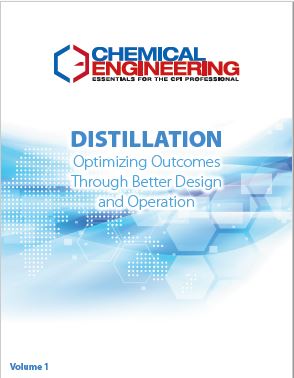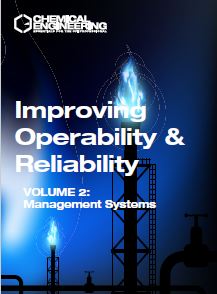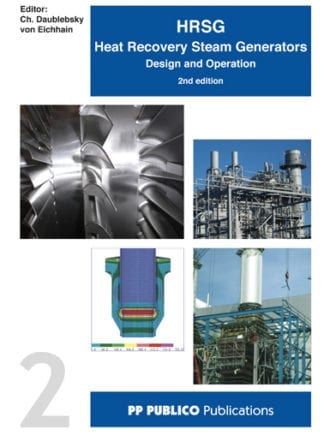Description
Distillation is one of the most fundamental unit operations used in chemical process plants. Efforts to properly design, specify and operate distillation columns are critical to optimal operation, as are the latest strategies for maintaining, troubleshooting and revamping them when necessary. And modern revamps typically include efforts to troubleshoot and upgrade ancillary equipment, such as reboilers, condensers, pumps, valves, heat exchangers and instrumentation.
The engineering articles contained in this Chemical Engineering Guidebook share proven strategies and best practices aimed as improving distillation. Several articles focus on the use of process simulation to help engineers evaluate and improve the performance of proposed and existing distillation columns.
Delivered in a PDF format, this guidebook is 179 pages.
Articles include:
Why Big Always Wins: Examining Economies of Scale
• Origami teaches one of the fundamental tenets of chemical engineering
Column Revamps: From Outside to Inside
• Some of the many things to consider for this complex task are presented here
Better Chemistry by Design
• Simulation software helps to create higher-performance, safer and more-economical CPI plants
Thermal Integration of Reboilers
• How to incorporate reboilers into composite curves, and more suggestions are given
Revamping Your Process Plant
• An overview of some options to consider for increasing capacities
Principles of P&ID Development
• The tips provided here will streamline efforts to develop piping & instrumentation diagrams
A Better Look into Kettle Reboilers
Absorber Optimization: Employing Process
Simulation Software
• Applying simulation-model case studies in the field yields significant savings with no capital investment
Distillation Column Thermal Optimization: Employing Simulation Software
• Applying process simulation software in distillation column design and operational analysis can lead to significant reductions in operational and maintenance costs and
improved column performance
Mega Columns, Mega Issues
New Horizons For Dividing Wall Columns
• How to significantly expand the application window of DWCs ,both as a new design to enhance potential benefits and as an energy saving retrofit option
Distillation Column Design Factors
Reboiler Circuit Debottleneck with No Hardware Changes
• With a thorough investigation and proper problem diagnosis, an entire gas plant limited by a deethanizer reboiler circuit was successfully debottlenecked
Dry-Tray Pressure Drop of Sieve Trays Revisited
• Data points from literature are refined into a single correlation defining dry-tray pressure drop in sieve trays
Reboiler Circuits For Trayed Columns
• These vetted recommendations are key to efficient and troublefree separations
Control Engineering for Chemical Engineers
• Chemical engineers who are aware of process control requirements and challenges are in a position to improve process designs
Random Tower Packing
Distillation Tray Design
Plant Revamps and Turnarounds: Some Lessons Learned
• Although time is always precious, taking shortcuts and skipping standard procedures can be costly
Distillation Column Modeling
Common Mistakes When Conducting a HAZOP and How to Avoid Them
• An important part of ensuring the success of a HAZOP study is to understand the errors that can cause the team to lose focus
Chemical Process Plants: Plan for Revamps
• Follow this guidance to make the most of engineering upgrades that are designed to improve plant operations or boost throughput capacity
Decommissioning: Preparing Plants for a Retrofit
• As technologies advance and market challenges continue to pose new pressures for operators, the decommissioning and retrofitting of facilities is inevitable. This article provides guidance on how to tackle projects of this nature safely and efficiently
Distillation, Part 1: Experimental Validation of Column Simulations
• A practical look at the need for validation, as well as conceptual considerations and a case study
Distillation, Part 2 Bubble-Cap Tray Vapor Turndown
• The concept of tray stability can apply to bubble caps and be used as an alternative method to determine the minimum efficient capacity of these devices. A new stability correlation for bubble-cap trays is proposed and checked against FRI data
Cyclohexane Production from Benzene and Hydrogen
Learning more about distillation
Flooded Condenser Controls: Principles and Troubleshooting
• Flooded condensers are the prime tower pressure-control methods for total condensers that generate only liquid products, and although these control methods can be troublesome, a good understanding of their principles will help achieve improved, trouble-free operations
Dry Tray Pressure Drop Of Sieve Trays
• A new correlation that matches most commercial trays
Distillation: Avoid Problems During Tower Startup
• Practical procedures for both effective startup and problem analysis are discussed here for a depropanizer that experienced downcomer seal loss
Mitigate Corrosion in Condensate-Return Systems
• Understanding the chemistry behind corrosion in condensate return systems can aid in selecting and properly employing the best mitigation technique
Distillation Optimization by Vap or Recompression
• Vapor recompression offers an energy-saving alternative to conventional distillation design
Determining Packing Height With Accuracy
• Theoretical stages are useful for process design calculations but transfer units bring much needed clarity to equipment selection and specification
A Window into Kettle Reboiler Secrets
The Science of Droplets




